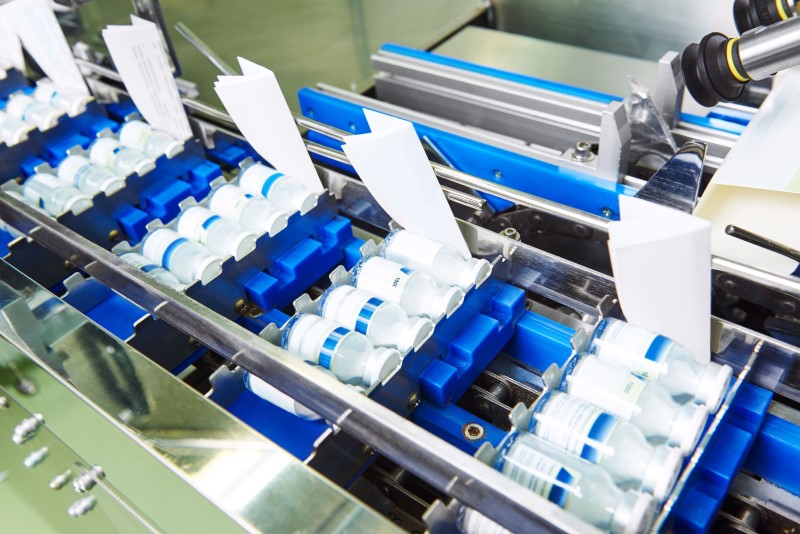What are the 4 Main Types of Linear Actuators?
Linear actuators provide push or pull straight-line motion and are often used for lifting, dropping, sliding or tilting of machines, objects or materials. Because they provide precise and efficient linear movement, they are essential in many automation, robotics and motion control applications in a variety of industries, including:
- Food processing
- Packaging
- Factory automation
- Printing
- Pharmaceutical
- Material handling
- Medical and healthcare
The Benefits of Linear Actuators
One of the reasons linear actuators are so widely used in automation, robotics and motion control applications is because they provide efficient, precise and repeatable linear motion. In addition, linear actuators offer:
- Low maintenance requirements
- Low initial cost/operational costs
- Energy efficiency
- Long lifespan
- Quiet operation

4 Types of Linear Actuators
While linear actuators provide many benefits in motion control, automation and robotic applications, they are available in a wide variety of styles, so it can be difficult to determine which type of linear actuator is best suited to an application. This blog aims to define the four most common types of linear actuators and provide information about important selection criteria.
| Electromechanical Linear Actuators | Hydraulic Linear Actuators |
| Most electromechanical linear actuators convert rotary motion into linear motion using a servo, stepper or gear motor driving a screw or belt driven mechanical linear actuator to provide excellent control and force over the required distance. | Hydraulic linear actuators utilize a hydraulic cylinder, piston-rod assembly and pressurized hydraulic fluid. The hydraulic fluid applies pressure to the piston to create motion. They offer high levels of force and are useful in rugged applications where moving heavy loads and mechanical stiffness are requirements, making them especially suitable for heavy-duty use, such as mining and construction equipment, agriculture, industrial, marine and aerospace applications. However, they are susceptible to leakage issues. |
| Pneumatic Linear Actuators | Piezoelectric Linear Actuators |
| Pneumatic linear actuators operate on the same principle as hydraulic actuators but use air pressure rather than hydraulic fluid to move the piston to create the required motion. The piston is enclosed in a cylinder, so when the compressed air enters the cylinder housing, the piston is forced into motion. They do not provide as much force as hydraulic linear actuators; however, they offer high speeds and are commonly used in many industrial applications such as packaging and material handling. | This type of linear actuator converts an electrical signal into a physical displacement of the housing material – often ceramic – to create precise positioning down to the sub-nanometer range with very short ranges in motion. Piezoelectric linear actuators offer fast acceleration rates, high precision and repeatability. They give off very little heat, do not consume much energy, have few moving parts and do not require lubrication, making them suitable for moving objects such as camera lenses and medical equipment. |
Selection Considerations for linear actuators
While the type of linear actuator selected is dependent upon the application and budget, there are several selection criteria that should be considered when choosing any type of linear actuator, including:
- Stroke Length: What is the distance you need the object to move? The distance that the linear actuator extends from the starting position is called its stroke length. Pneumatic linear actuator applications that are space-restricted may require a rodless type.
- Force: What is the load? The amount of weight a linear actuator can move is referred to as its force. A heavy-duty application, such as construction equipment, will demand a higher force than a camera lens would. Things like orientation, direction and friction need to be considered also.
- Speed: Does your application need to move fast or slow? The speed of a linear actuator refers to how quickly it can extend from and return to its starting position and is measured in distance per second. Manufacturer specifications will tell you the speed rating, but keep in mind that there is often a trade off between speed and force in that the speed at which the linear actuator travels is often subject to change based upon the weight of the object it is moving.
- Repeatability: Repeatability refers to the ability of the linear actuator to precisely hit the same starting and ending points each time it is activated. Some applications will require much more precision and repeatability than others.
- Operating Environment: Not only is choosing the right type of linear actuator important to the success of the project, but it’s also important to consider the operating environment. For example, if the linear actuator will be used in equipment for food processing, a hydraulic type may not be suitable. Also keep in mind that dirty, dusty environments will be harder on an actuator than a clean room environment and this could impact the life of the component.
Linear actuators provide a lot of benefits in motion control projects, automated equipment and robotics in a wide variety of industries, but choosing the proper type of linear actuator and confirming that the selected model meets the requirements of the application will ensure that all the advantages are achieved.
For assistance in selecting the best linear actuator for your project or equipment, please contact JHFOSTER.